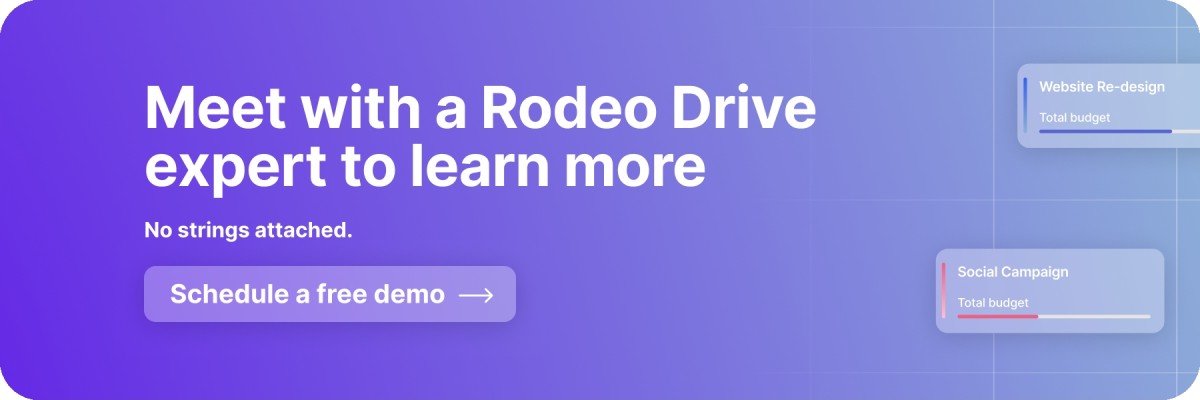What's a Steering Committee, and Does Your Project Need One?
Your company is about to undertake a big project. A really big, long-term project. You’ve selected a great manager to spearhead the project and assembled a capable team solely focused on that project. The project has big implications for your organization at large and stakeholders from various departments.
However, you don’t want to meddle. You want to trust the team to handle the day-to-day execution of the project because, after all, they have all the talent needed to get the project done. Situations like these are where a steering committee is immensely valuable.
A steering committee is a group of leaders and important project stakeholders who meet periodically to discuss the course of the project and offer support. A steering committee affords the project team and manager the ability to autonomously make decisions, while giving the rest of the organization an accountability mechanism for the project. Through these committees, important project issues can be brought into the open, and resources coordinated across departments to ensure project success.
What’s a steering committee?
In project management, a steering committee is an advisory group overseeing the direction of a project. A steering committee’s role is to make sure a project progresses as planned, navigating them smoothly through the constraints of the project management triangle.
Usually, these bodies are made up of a collection of key stakeholders and decision-makers. They bring together project-relevant expertise that will support the project in achieving its success criteria.
The purpose of a steering committee
Now, why would you introduce a steering committee into your project governance?
Well, the answer is a steering committee encourages a structured decision-making process for projects. They provide oversight, making sure a project is following through with its intended scope. This is especially important for larger organizations, where multiple teams need coordination and the project must be directed toward big-picture, strategic aims.
Different types of steering committees
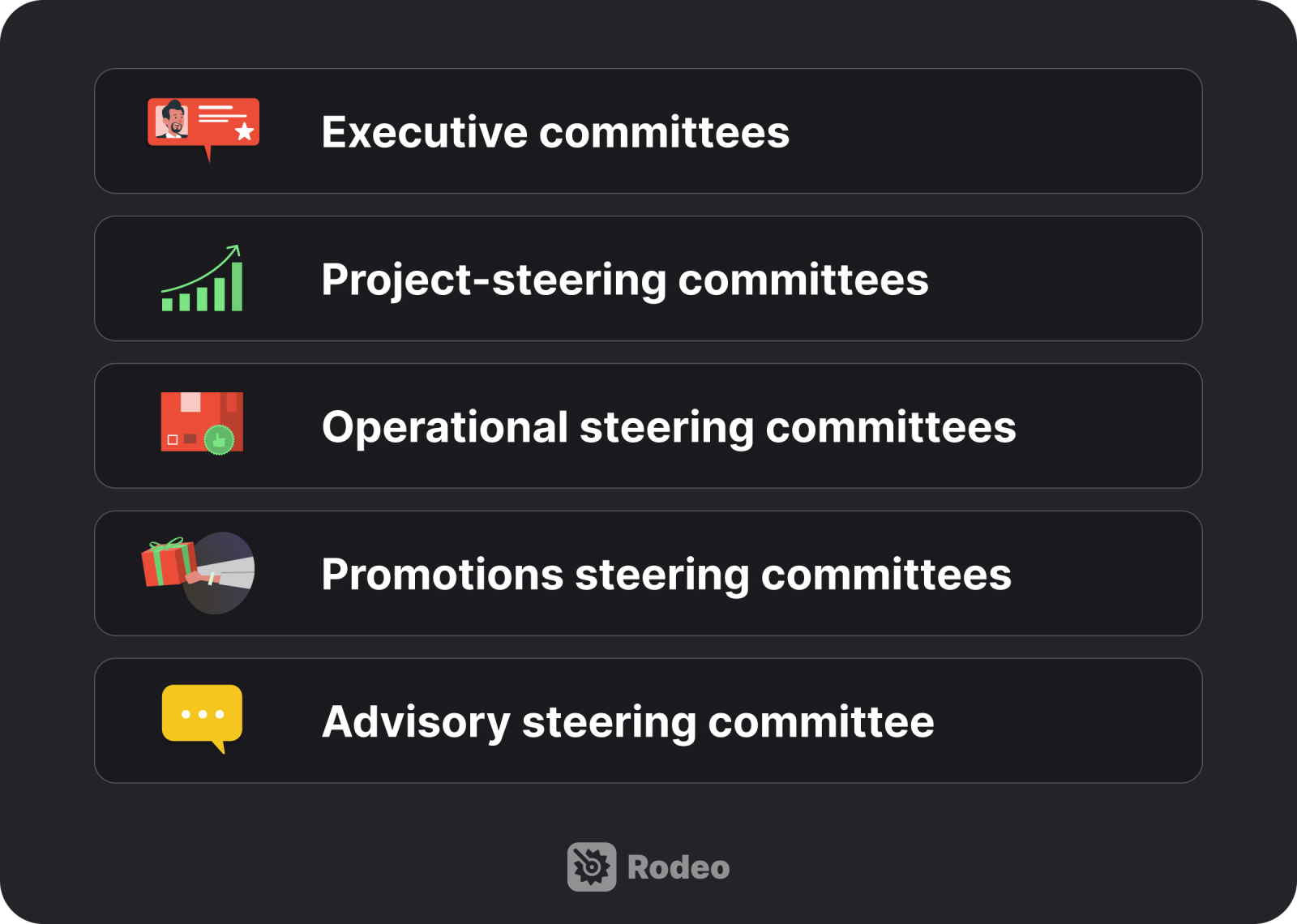
An organization might assemble a steering committee to fulfill a specific function. Here’s an overview of some of the specialized types of steering committees, and what roles they fulfill in project management.
- Executive committees are made up of senior managers, executives, and directors. They’re assembled to create strategic plans and build consensus on decisions with high impact throughout an organization. They work together to set priorities, allocate resources such as funding, and set performance benchmarks.
- Project-steering committees are gathered for a limited timeline, where they help project managers complete project goals. These committees can be liaisons between managers at the ground level and upper management. In addition to progress tracking, they can lobby for more funding for projects and facilitate cross-functional work.
- Operational steering committees have experts who can work closer to the execution side of a project. They help solve the logistical challenges of a project, ensuring the project manager has the right people and equipment to succeed. An operational steering committee might be made up of team leads from departments relevant to the project, consultants, and domain experts tackling important issues for the project.
- Promotions steering committees build systems for promoting employees. They evaluate candidates for promotion while creating compensation packages that fairly reward employees for taking on new responsibilities.
- Advisory steering committees are similar in makeup to an operational committee but less hands-on in the execution of a project. Instead, they support a project with technical expertise and advice, while giving the project team autonomy to achieve the project’s goals.
Who should be included in the steering committee?

The examples above showcase some of the different ways to choose the makeup of a steering committee, depending on their intended purpose. If we narrow it down to just project steering committees, there’s a list of stakeholders one should generally include. These are:
- Project sponsors: The top advocate for the project, who provides resources and support.
- Senior management: People at the top level of your organization who provide oversight and accountability.
- Project managers: Reports progress to the committee along with risks and other important on-the-ground information.
- Key external stakeholders: If a client is sponsoring the project, having them onboard the committee ensures the project meets their expectations in the end.
Main responsibilities of a project steering committee

A project steering committee will delegate the day-to-day management functions of a project to a project manager. Their role is to assist with functions like planning and determining the resources needed for the project.
Here’s a look at their responsibilities in more detail.
Defining project scope and objectives
The committee will help the project manager select goals that are aligned with strategic plans and achievable within the timeline of the project. Along with goal-setting, they help the project manager establish the project scope and KPIs to measure them.
Allocate resources
Another critical function of a project committee is to oversee resource allocation. They work with the project manager to ensure the project has access to necessary financial, human, and technical resources. They can also make decisions on budget adjustments should the project change in scope.
Manage risks
Steering committees play a crucial role in identifying, assessing, and mitigating risks that could threaten the project's success. They establish risk management frameworks and help correct course when projects face uncertainties.
Related: Your Guide to Keeping a Risk Register for Projects
Make high-level decisions
As the project's governing body, the steering committee makes high-level decisions that affect the project's direction. This includes resolving conflicts, approving major changes in scope, and making trade-offs between project constraints.
Communicate with stakeholders
Project committees also facilitate much of the stakeholder management process. Key stakeholders often sit on project committees or are informed about project progress through reports from a project committee. Project committees are therefore a big part of fostering transparency and trust between the project team and stakeholders.
Monitor and evaluate the performance of a project
The committee monitors the project's progress against its objectives and KPIs, evaluating performance and implementing adjustments to keep the project on track toward its goals.
Related: Goals vs. Objectives: Is There a Difference?
What to know about steering committee meetings
Steering committees meet periodically throughout a project lifecycle to review progress. Depending on the course of the project, they’ll make adjustments or simply report back to other stakeholders.
To run effective steering committee meetings, you should consider some of the following best practices:
1. Frequency and timing
Determine the meeting frequency based on the project's size and complexity. For large projects, monthly meetings might be necessary, while less prioritized projects may require less frequent gatherings.
2. Agenda and documentation
Prepare a clear agenda ahead of time, focusing on strategic issues, decision-making items, and critical updates. Documenting discussions and decisions is vital for accountability and tracking purposes.
3. Participation and engagement
Encourage active participation from all committee members, ensuring perspectives from throughout your organization are heard. This can be facilitated through structured discussion points and by assigning pre-meeting review materials.
4. Follow-up actions
Conclude meetings with clear action items, assigning responsibilities and deadlines. Follow up on these actions to ensure implementation and progress toward objectives.
Best practices for a successful steering committee
When it comes to actually building a steering committee, there are three best practices you should keep in mind:
Best practice 1: Establish clear roles and expectations
For a steering committee to function efficiently, each member must understand their unique role and the expectations tied to it.
This clarity helps in minimizing overlaps and gaps in responsibilities, ensuring comprehensive oversight and governance.
For instance, while the project sponsor provides resources and champions the project at the executive level, the project manager handles day-to-day management, ensuring alignment with the committee’s strategic direction.
Example: In a tech startup launching a new software product, the steering committee might include the CEO (Project Sponsor), CTO (Technical Advisor), Head of Marketing (Stakeholder Representative), and an external consultant (Advisory Role). Each has a defined role: the CEO ensures alignment with business goals, the CTO advises on technical feasibility, the Head of Marketing focuses on market fit, and the consultant brings external expertise.
Best practice 2: Foster open communication
Open communication is the linchpin of a successful steering committee. Using a communication plan template can be a helpful way to get started.
Good communication entails not only regular updates and meetings but also creating a culture where feedback is encouraged, and challenges can be openly discussed.
Action Item: Implement structured yet flexible communication channels, such as dedicated project management software, regular email updates, and quarterly in-person meetings.
Best practice 3: Embrace agile decision-making
While steering committees must make informed decisions, agility in decision-making processes ensures that the project can quickly adapt to changes or challenges. This means establishing a decision-making framework that balances thorough analysis with the need for timeliness, allowing the project to progress efficiently without unnecessary delays.
Action Item: Create a decision matrix that outlines which types of decisions require full committee consensus, which can be made by a subset of members, and which can be delegated to individual members or the project manager. This framework helps streamline decision-making, ensuring that not every decision needs to bottleneck through the full committee.
Keep your steering committee up to date using Rodeo Drive
A great way to track projects and keep every decision-maker — including a steering committee — informed is with project management software. Rodeo Drive is a project management solution that brings planning, budgeting, time tracking, and reporting functions together in one place.
Here’s a closer look at Rodeo Drive’s key features:
A timeline-view planner to manage your team’s capacity
With Rodeo Drive’s timeline-view planner, a steering committee can follow projects at a high level, while project managers can control their execution on a granular level. See planned activities across all ongoing projects to find dependencies and resource overlap, or filter down to an individual project view for focused planning.
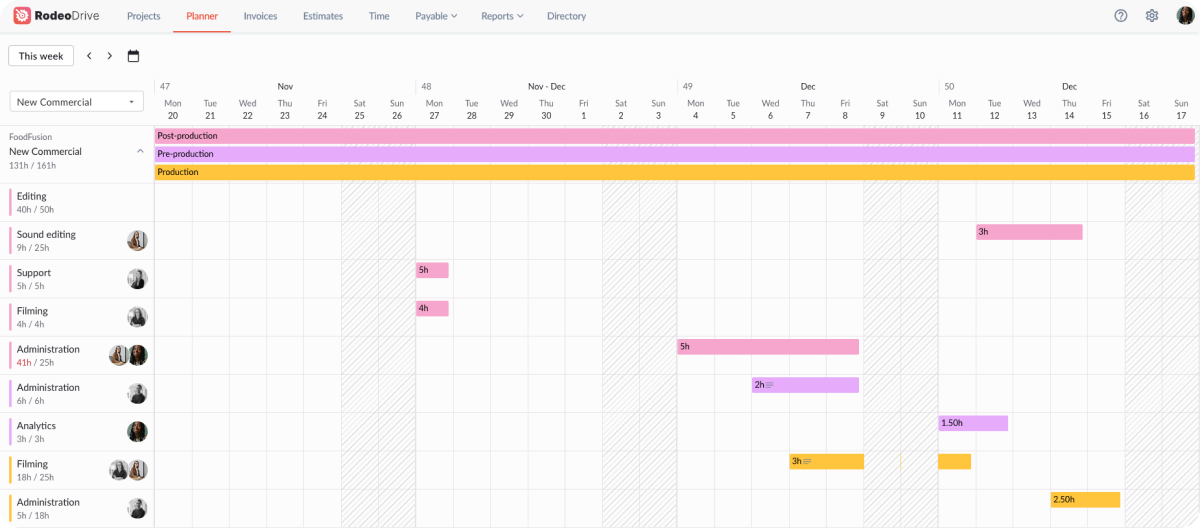
Oversee timelines, plan activities, and assign team members with Rodeo Drive’s planner
Additionally, the planner’s people view lets project leaders understand resource availability day-to-day. The people view of the planner has intuitive visual indicators that show if a person has available hours in a day, is fully booked, or is overbooked.
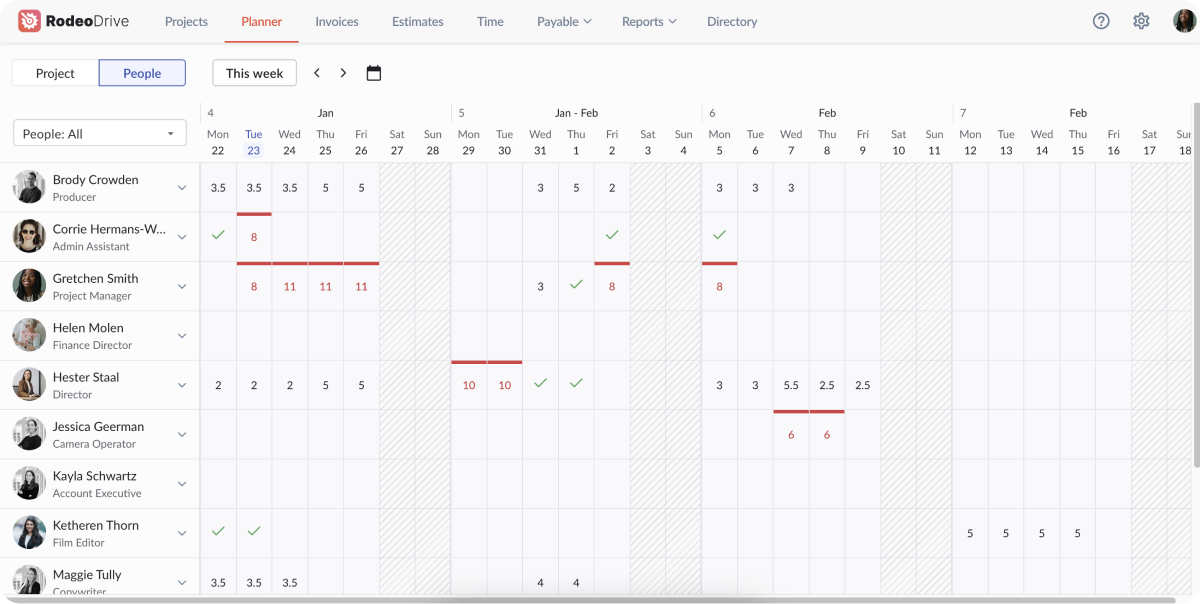
Manage capacity at a glance
If the project team is consistently overbooked, a steering committee can easily identify the issue and allocate more resources or time.
Budget controls and financial management
Using Rodeo Drive’s budgeting feature, a steering committee can oversee project spending across activities and expenses. The format is readable and easy to understand compared to a spreadsheet, with an overview of your most important metrics available at the top of your budget.

Easily track your budget metrics at a glance with Rodeo Drive
Plus, your budgets will update in real time as your team logs their billable hours within Rodeo Drive, allowing you to easily compare planned budget allocations with the actual amount spent at any point during your project.

Budget project items accurately and add markups where necessary
Automatic reports on your financials, time, and productivity
Rodeo Drive features three automatically generated reports — Projects, Time, and Productivity. The Time report showcases what client, project, and activity each of your team members logs time for. What’s special about the feature is that it quantifies the cost of each activity, allowing you to understand the true cost of time and reflect it in your project pricing.
.png)
See the true cost of time with Rodeo Drive’s Time report
The Productivity report in Rodeo Drive is another tool for capacity management. Through the Productivity report, you can see how many hours team members have logged versus those they have scheduled. This can help you find availability or, by using the percentage tracked column, identify overwork.
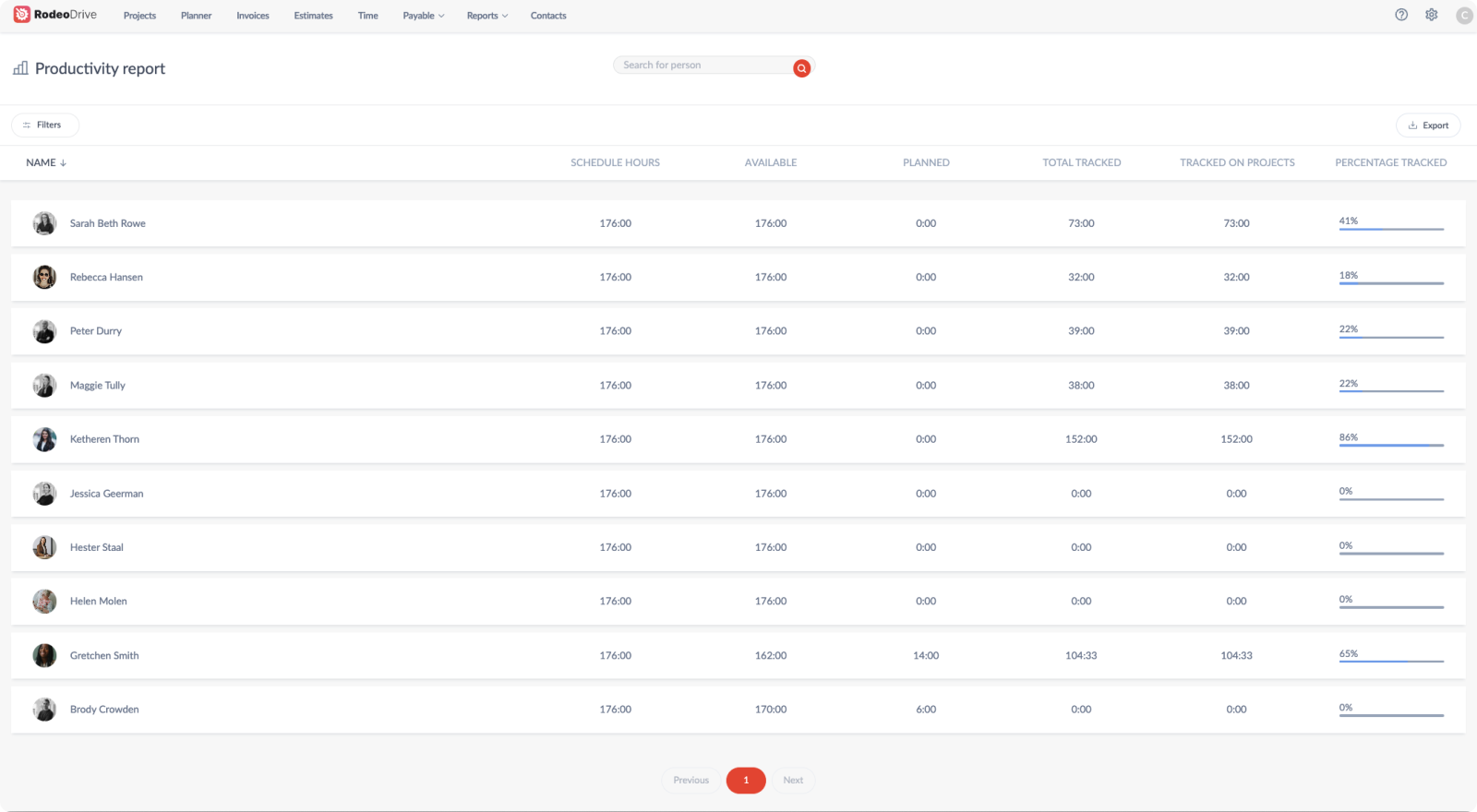
Oversee scheduled, available, and tracked time from one view
Finally, the Projects report is useful for staying updated on project financial metrics and progress. They provide an overview of gross margins, tracked time, remaining budget, and invoices received for all ongoing projects.
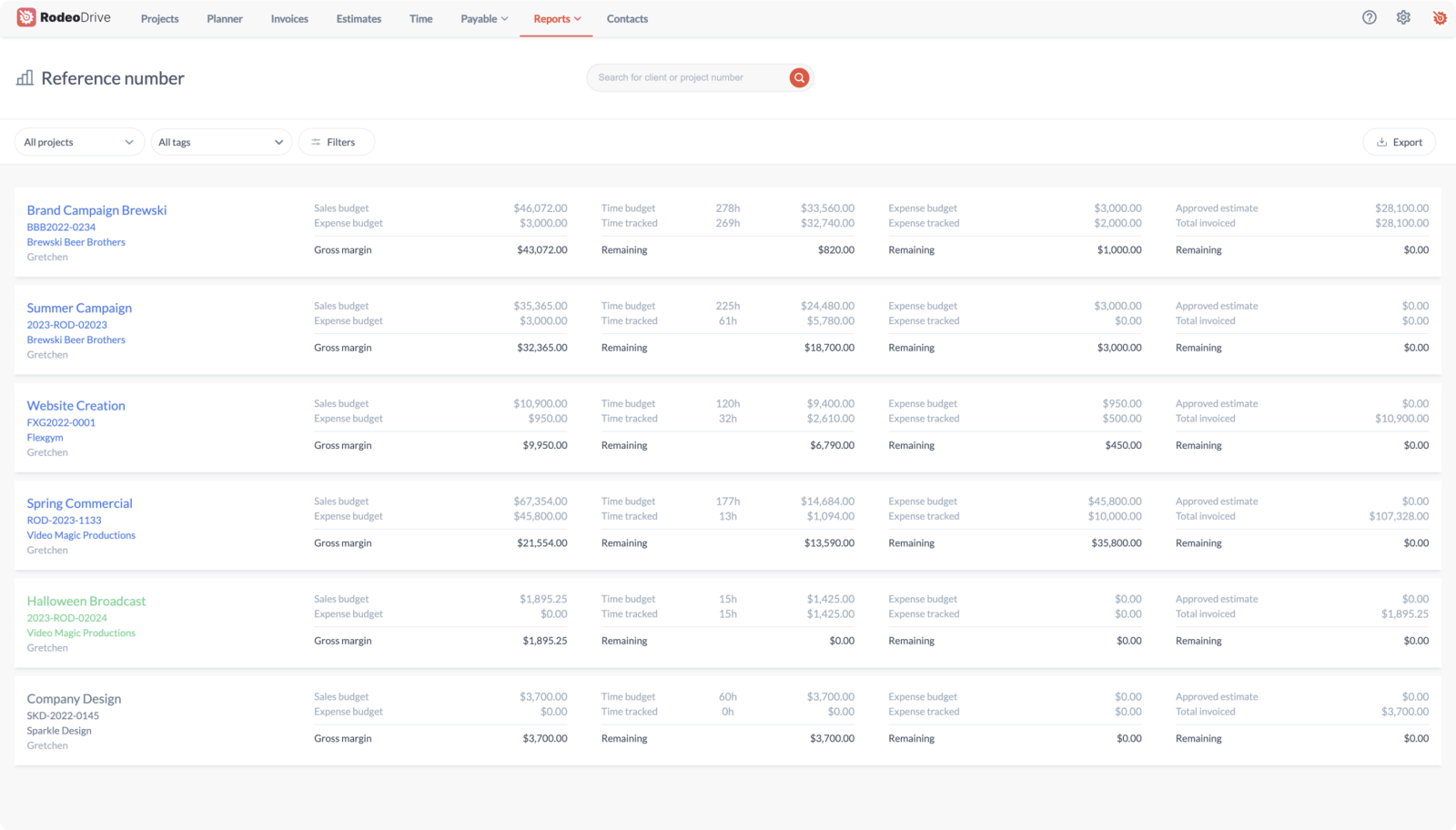
Keep your projects profitable by tracking margins and expenses in real time
This report can be useful to share when kicking off a steering committee meeting. It’ll give committee members context on the health of each project, which they can use to investigate obstacles and make decisions.
But don’t just take our word for it — start using Rodeo Drive for free today and see how easy project management can be.






